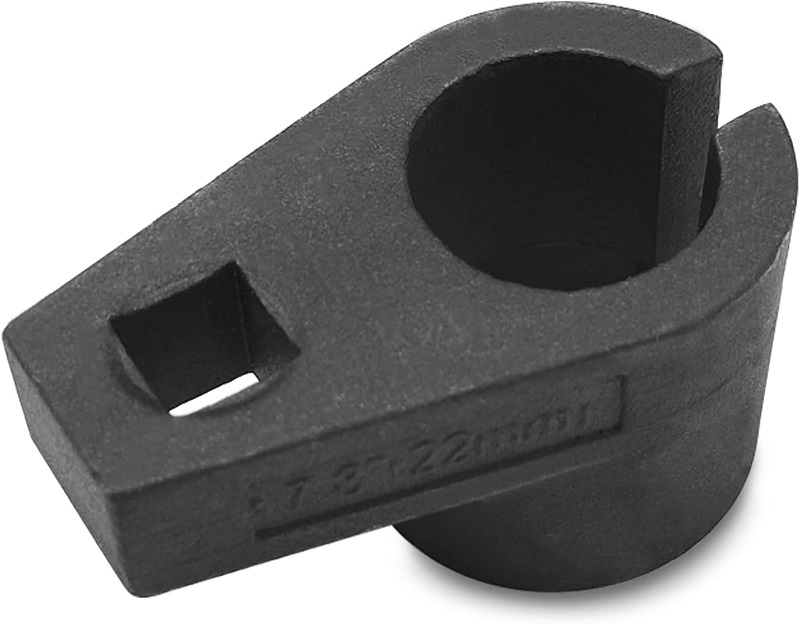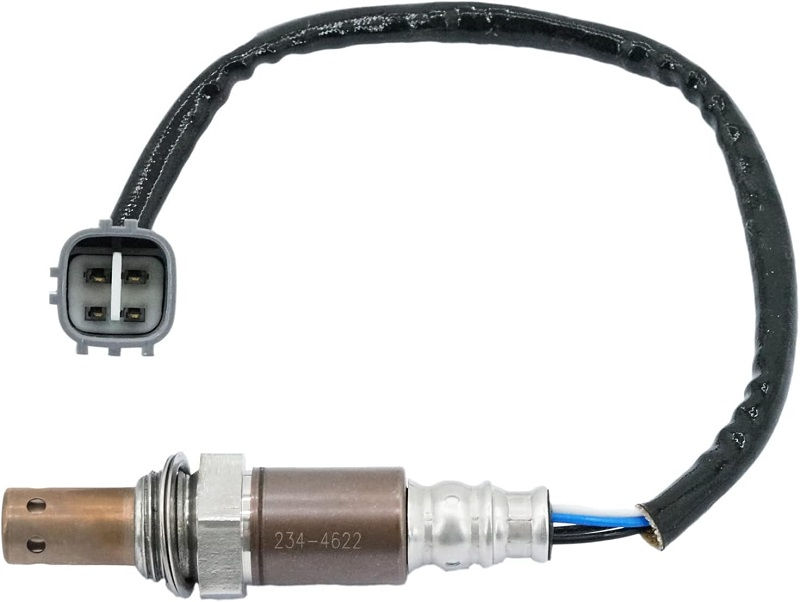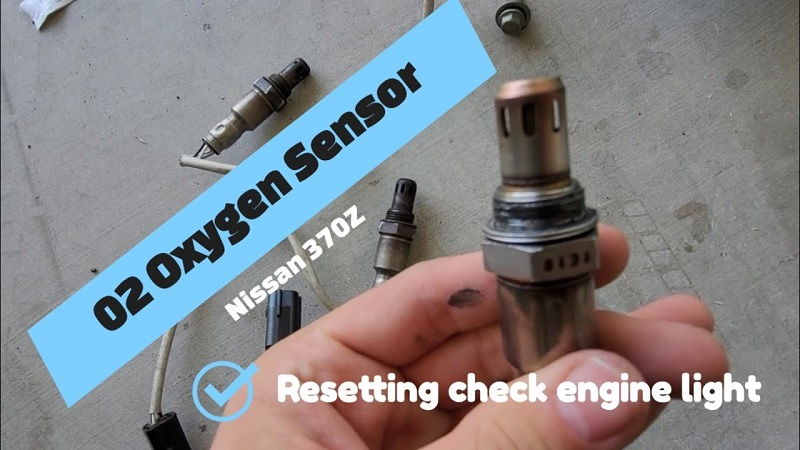This post contains affiliate links. This means I will make a commission at no extra cost to you should you click through and make a purchase [ “As an Amazon Associate, I earn from qualifying purchases.” ]. Read the full disclosure here.
O2 Sensor Check Engine Light GuideMechanic.Com When the dreaded check engine light illuminates on your dashboard, it’s easy to feel a surge of panic.
However, before you jump to conclusions or head straight to the mechanic, it’s essential to understand the potential culprit behind this warning sign: the oxygen sensor, commonly known as the O2 sensor.
In this comprehensive blog article, we will delve into the intricacies of the O2 sensor and why it warrants your attention.
In this guide, we will explore everything you need to know about the O2 sensor check engine light, including its function, how it works, and why it is crucial to address any issues promptly.
See Also: Mini Cooper Check Engine Light
By the end of this article, you will have a clear understanding of the significance of maintaining a healthy O2 sensor and the implications of ignoring its warnings.
Understanding the Role of the O2 Sensor

The O2 sensor plays a crucial role in your vehicle’s engine management system. Its primary function is to monitor the oxygen levels in the exhaust gases and provide feedback to the engine control unit (ECU).
By measuring the oxygen content, the O2 sensor helps the ECU determine the ideal air-fuel mixture for combustion.
The O2 sensor is typically located in the exhaust system, either near the engine or downstream close to the catalytic converter.
There are generally two types of O2 sensors used in modern vehicles: upstream (pre-catalytic converter) and downstream (post-catalytic converter) sensors.
The upstream sensor monitors the oxygen levels in the exhaust gases before they enter the catalytic converter, while the downstream sensor measures the oxygen levels after the gases have passed through the catalytic converter.
Having accurate data from the O2 sensor allows the ECU to make real-time adjustments to the fuel injection system, ensuring optimal combustion efficiency. This, in turn, helps improve fuel economy, reduce emissions, and maintain overall engine performance.
Without a properly functioning O2 sensor, the engine control system may operate based on inaccurate readings, leading to various issues.
Upstream vs. Downstream O2 Sensors
Understanding the difference between upstream and downstream O2 sensors is key to diagnosing and troubleshooting potential issues.
The upstream sensor, also known as the primary sensor, provides vital feedback to the ECU, enabling it to adjust the air-fuel mixture for optimal combustion.
On the other hand, the downstream sensor, or secondary sensor, monitors the efficiency of the catalytic converter by comparing the oxygen levels before and after the conversion process.
When a check engine light related to the O2 sensor is triggered, it’s essential to identify whether it is the upstream or downstream sensor causing the issue. This information will help determine the appropriate troubleshooting steps and potential solutions.
Types of O2 Sensors
While the basic function of all O2 sensors remains the same, there are different types available in the market. The most common types are zirconia sensors and titanium oxide sensors.
See Also: Volvo Check Engine Light
Zirconia sensors are the traditional and most commonly used type. They consist of a ceramic element that measures the oxygen concentration.
These sensors operate by comparing the oxygen levels between the exhaust gases and outside air. When the oxygen concentration in the exhaust gases is higher, the sensor generates a voltage signal to the ECU, indicating a rich air-fuel mixture. Conversely, when the oxygen concentration is lower, the voltage signal indicates a lean air-fuel mixture.
Titanium oxide sensors, also known as wideband sensors or lambda sensors, are more advanced and provide more accurate readings. These sensors measure the oxygen concentration using a chemical reaction on a porous sensing element.
They can detect a wide range of air-fuel ratios and provide precise feedback to the ECU, allowing for more precise fuel control.
It’s important to consult your vehicle’s manual or consult a professional to determine the type of O2 sensor used in your specific make and model.
Signs and Symptoms of a Faulty O2 Sensor

A malfunctioning O2 sensor can lead to a variety of issues that affect your vehicle’s performance, fuel efficiency, and emissions. Recognizing the signs and symptoms of a faulty O2 sensor is crucial in diagnosing and addressing the problem promptly.
Decreased Fuel Efficiency
One of the most common indicators of a faulty O2 sensor is a decrease in fuel efficiency. When the sensor fails to provide accurate oxygen level readings to the ECU, the engine control system may deliver an improper air-fuel mixture.
This can result in a rich (excess fuel) or lean (insufficient fuel) condition, both of which can significantly impact fuel economy.
In a rich condition, the engine burns more fuel than necessary, leading to decreased mileage. On the other hand, a lean condition can cause the engine to run hotter and cause poor combustion, resulting in reduced fuel efficiency. If you notice a sudden drop in your vehicle’s gas mileage, it may be a sign of a faulty O2 sensor.
Rough Idle or Engine Misfires
A malfunctioning O2 sensor can also lead to rough idling or engine misfires. The inaccurate air-fuel mixture caused by a faulty sensor can disrupt the combustion process, resulting in unstable engine performance.
You may experience a noticeable vibration or shaking when the engine is at idle, indicating an irregular combustion cycle.
In some cases, a faulty O2 sensor can cause engine misfires, where the cylinders fail to ignite the air-fuel mixture properly.
This can lead to a loss of power, hesitation, and even stalling. If you encounter these symptoms, it’s essential to have your O2 sensor checked to avoid further engine damage.
Check Engine Light Illumination
The most obvious sign of a faulty O2 sensor is the illumination of the check engine light on your dashboard. When the O2 sensor detects a problem, it sends a signal to the ECU, triggering the check engine light.
However, it’s important to note that the check engine light can illuminate for various reasons, so it’s crucial to use a diagnostic tool to retrieve the specific OBD-II (On-Board Diagnostics) code associated with the O2 sensor.
When the check engine light comes on, it’s always recommended to have the issue diagnosed by a professional or perform a thorough inspection yourself to determine the exact cause. Ignoring the check engine light can lead to more severe problems and costly repairs down the line.
High Emissions
The O2 sensor plays a significant role in controlling vehicle emissions. A malfunctioning sensor can result in increased emissions, contributing to air pollution and potentially failing emissions tests.
If your vehicle fails an emissions test or you notice excessive smoke or unusual odors coming from your exhaust, it could be a sign of a faulty O2 sensor.
Slow Response Time
In some cases, a failing O2 sensor may exhibit a slow response time. This means that the sensor takes longer to provide accurate readings to the ECU.
See Also: Check Engine Light After Oil Change
A delayed response can cause the engine control system to operate based on outdated information, leading to poor performance and increased fuel consumption.
The Consequences of Ignoring the O2 Sensor Check Engine Light

While it may be tempting to ignore the check engine light related to the O2 sensor, doing so can have severe consequences for your vehicle and the environment. Ignoring the warning signs can lead to further damage and more expensive repairs in the long run.
Reduced Engine Performance
A faulty O2 sensor can significantly impact your vehicle’s engine performance. The inaccurate air-fuel mixture caused by a malfunctioning sensor can lead to reduced power, sluggish acceleration, and overall poor engine responsiveness.
If left unaddressed, the performance degradation can worsen over time, potentially leading to more significant engine issues.
Increased Fuel Consumption
As mentioned earlier, a malfunctioning O2 sensor can cause a rich or lean air-fuel mixture, both of which can result in increased fuel consumption.
In a rich condition, excess fuel is being injected into the cylinders, leading to wasted fuel and reduced mileage.
In a lean condition, the engine runs hotter and less efficiently, requiring more fuel to maintain performance. Ignoring the O2 sensor can lead to higher fuel bills and decreased overall efficiency.
Catalytic Converter Damage
The O2 sensor’s downstream counterpart plays a vital role in monitoring the efficiency of the catalytic converter.
If the downstream sensor fails to provide accurate readings, it can lead to an improper air-fuel mixture entering the catalytic converter. This can cause the converter to overheat and potentially fail, resulting in costly repairs or replacement.
Increased Emissions
A malfunctioning O2 sensor can significantly impact vehicle emissions, leading to increased pollution. When the sensor fails to provide accurate oxygen level readings, it can result in improper fuel combustion and increased levels of harmful pollutants being released into the atmosphere.
This not only contributes to air pollution but can also cause your vehicle to fail emissions tests, leading to legal and financial consequences.
Potential Engine Damage
Ignoring the check engine light related to the O2 sensor can ultimately lead to severe engine damage. The inaccurate air-fuel mixture caused by a faulty sensor can result in abnormal combustion, increased temperatures, and potential damageto engine components such as the pistons, valves, and spark plugs.
Over time, this can lead to reduced engine lifespan and the need for costly repairs or even engine replacement.
How to Perform an O2 Sensor Check
If you suspect that your O2 sensor may be faulty, it’s important to perform a thorough check to confirm the issue before taking any further action.
While a professional diagnostic tool is the most accurate way to diagnose O2 sensor problems, there are some basic checks you can perform yourself.
Visual Inspection
Before diving into more advanced diagnostic procedures, start by visually inspecting the O2 sensor and its wiring connections. Look for any signs of damage, corrosion, or loose connections.
A damaged sensor or faulty wiring can cause issues with the sensor’s functionality. If you notice any visible problems, it may be necessary to replace the sensor or repair the wiring connections.
Using a Multimeter
A multimeter can be a valuable tool to help diagnose O2 sensor problems. Set the multimeter to the voltage setting and connect the positive lead to the signal wire of the sensor (refer to your vehicle’s manual or consult a professional to identify the correct wire).
Ground the negative lead to a suitable grounding point. With the engine running at normal operating temperature, observe the voltage readings on the multimeter.
The voltage should fluctuate between 0.1 and 0.9 volts if the sensor is functioning correctly. If the voltage remains steady or is outside of the expected range, it may indicate a faulty sensor.
OBD-II Diagnostic Scan
To obtain more accurate and specific information about the O2 sensor’s performance, it is recommended to use an OBD-II diagnostic scan tool.
See Also: Car Swerving Light
This tool connects to the OBD-II port of your vehicle and retrieves error codes related to the O2 sensor. These codes can provide valuable insight into the specific problem detected by the sensor and assist in pinpointing the issue.
Consulting a Professional
If you are unsure about performing the O2 sensor check yourself or if the diagnostic tools indicate a potential problem, it’s advisable to consult a professional mechanic.
They have the expertise and specialized equipment to accurately diagnose O2 sensor issues and recommend appropriate solutions.
Common O2 Sensor Problems and Solutions
O2 sensors can experience various problems, ranging from contamination to wear and tear. Here are some common issues you may encounter with your O2 sensor and potential solutions:
Contamination
Contamination is a common problem that can affect the performance of the O2 sensor. Substances such as oil, coolant, and silicone can coat the sensor, hindering its ability to detect oxygen levels accurately.
Contamination can be caused by internal engine leaks, faulty gaskets, or the use of improper additives. In such cases, cleaning the sensor with a specialized sensor cleaner can help restore its functionality. However, if the contamination is severe or persistent, it may be necessary to replace the sensor.
Sensor Age and Wear
Over time, O2 sensors can degrade and become less efficient due to normal wear and tear. The sensor’s performance can deteriorate, resulting in inaccurate readings and potential engine issues.
If your O2 sensor is reaching the end of its recommended lifespan (typically around 100,000 miles), it’s advisable to replace it proactively to maintain optimal engine performance and fuel efficiency.
Faulty Wiring or Connectors
Faulty wiring or connectors can disrupt the communication between the O2 sensor and the ECU, leading to inaccurate readings or a complete failure of the sensor.
Inspect the sensor’s wiring and connectors for any signs of damage, corrosion, or loose connections. If necessary, repair or replace the wiring and connectors to ensure a proper connection and functionality of the sensor.
Exhaust System Leaks
Exhaust system leaks can introduce false air into the exhaust stream, affecting the accuracy of the O2 sensor’s readings. Leaks can occur at various points in the exhaust system, including the manifold, gaskets, or piping.
Inspect the exhaust system for any visible leaks and have them repaired promptly. Addressing exhaust leaks can improve the O2 sensor’s performance and overall engine efficiency.
Faulty Heater Circuit
Some O2 sensors have a built-in heater circuit that helps the sensor reach its operating temperature quickly.
A faulty heater circuit can prevent the sensor from operating correctly, especially during cold starts. If you suspect a problem with the heater circuit, consult a professional mechanic to diagnose and repair the issue.
How to Replace a Faulty O2 Sensor
If diagnostics confirm that your O2 sensor is faulty and cannot be repaired, replacing the sensor is the next step. Here’s a general guide on how to replace a faulty O2 sensor:
Identify the Faulty Sensor
Refer to your vehicle’s manual or consult a professional to identify the location of the faulty O2 sensor. It’s important to determine whether it is the upstream or downstream sensor and its specific position in the exhaust system.
Gather the Necessary Tools
Before starting the replacement process, ensure you have the necessary tools on hand. These may include a wrench or socket set, penetrating oil (if the sensor is difficult to remove), and possibly a wire crimping tool if the sensor’s wiring needs to be spliced.
Disconnect the Sensor
Ensure the engine is cool before starting. Locate the sensor and disconnect the electrical connector. If necessary, apply penetrating oil to the sensor threads to ease removal.
Remove the Old Sensor
Using an appropriate wrench or socket, carefully loosen and remove the old sensor from the exhaust system. Take note of the sensor’s orientation and position for proper installation of the new sensor.
Install the New Sensor
Before installing the new sensor, compare it to the old sensor to ensure they are identical. Apply anti-seize compound to the threads of the new sensor to prevent seizing in the future. Carefully thread the new sensor into the exhaust system and tighten it securely, taking care not to overtighten.
Reconnect the Electrical Connector
Once the new sensor is securely installed, reconnect the electrical connector. Ensure a proper connection is made, and check for any loose or damaged wiring.
Clear the Error Codes
After replacing the sensor, use an OBD-II diagnostic scan tool to clear any error codes associated with the faulty sensor. This will reset the check engine light and allow you to monitor the performance of the new sensor.
See Also: Truck Dashboard Symbols and Meanings
Related video of The Importance of Checking Your O2 Sensor When the Check Engine Light Comes On
- Pizza Food Trucks for Sale Ready to Use - July 12, 2025
- Vegan Food Trucks for Sale by Owner - July 12, 2025
- Ice Cream Food Trucks for Sale - July 11, 2025

